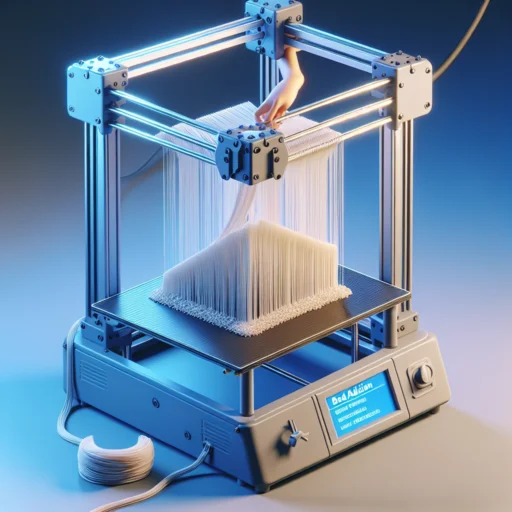Understanding the Importance of Bed Adhesion in 3D Printing
If you’ve recently delved into the exciting world of 3D printing, you’ve likely come across the term "bed adhesion." It’s one of those phrases that might seem technical at first, but understanding its significance can completely revolutionize your printing experience. So, let’s take a friendly stroll through the ins and outs of bed adhesion and why it matters more than you might think.
What is Bed Adhesion?
At its core, bed adhesion refers to how well your 3D printed object sticks to the print bed during the printing process. Picture it like a dance: if your dancer—your 3D print—can’t find a solid grip on the floor (or bed, in this case), it’s going to stumble and fall. This poor connection can lead to a variety of printing problems, from warping and shifting to outright failure before the print is completed.
Why Does Bed Adhesion Matter?
-
Prevention of Warping: One of the biggest enemies of a successful 3D print is warping. As the material cools, it tends to contract, which can pull it away from the build plate if the adhesion isn’t strong enough. This is especially a concern when printing in certain materials like ABS, which are notorious for their warping tendencies. A solid grip on the print bed helps mitigate this common issue.
-
Surface Quality: The first few layers of a print set the stage for the entire job. If your print is not adhering well, you might end up with a rough surface quality or, worse yet, layers that misalign. Investing the time in proper bed adhesion techniques can lead to smoother surfaces, improved layer bonding, and a more polished final product.
-
Time and Material Optimization: 3D printing can be a costly affair, particularly when it comes to filament. A failed print doesn’t just mean wasted time; it also means wasted resources. By ensuring your prints stick to the bed, you’re optimizing your material usage and improving your efficiency. Plus, you won’t have to redo stubborn prints that couldn’t stick it out!
-
Print Accuracy: When your model stays firmly in place, you’re more likely to experience accurate dimensional outputs. This is especially critical for projects that require tight tolerances and specific measurements. Smooth, uniform adhesion allows for a more precise replication of your design.
Tips for Improving Bed Adhesion
Now that we understand why bed adhesion is vital, how do we ensure it? Here are a few tried-and-true strategies to improve your print bed adhesion:
-
Level Your Bed: Before every print, ensure that your print bed is level. An unleveled surface can lead to uneven first layers that don’t stick correctly. Most 3D printers have a calibration feature that helps you keep things level, so make sure to use it!
-
Consider Your Bed Material: Different materials have varying adhesive properties. Glass is popular for its smooth finish, but try materials like PEI or BuildTak for improved adhesion. It’s all about experimenting to see what works best for your specific printer and filament.
-
Adjust Temperature Settings: Sometimes, adjusting the temperature of your print bed can enhance adhesion. It may be worth exploring different bed temperatures based on the filament you’re using; for example, a higher temperature might work wonders for ABS prints.
-
Use Adhesive Aids: Don’t hesitate to utilize adhesive sprays, glues, or even blue painter’s tape to help your print stick. There are many options, such as hairspray or glue sticks, that can act as excellent adhesion strategies. Just make sure to clean your bed regularly to avoid buildup.
-
Optimize Your First Layer Settings: Slowing down your print speed for the first layer and ensuring a thicker initial layer can lead to better adhesion. Many slicer programs allow you to adjust these settings specifically for the first layer, so take advantage of those tweaks.
In the grand scheme of 3D printing, bed adhesion isn’t just a technical detail—it’s the foundation for everything that follows. By honing in on your bed adhesion techniques, you’ll save yourself a lot of hassle and frustration down the line. With a solid understanding of this topic, you can transform your 3D prints from “just okay” to truly exceptional. So grab your tools, optimize your settings, and enjoy the rewarding journey of bringing your creative visions to life!






